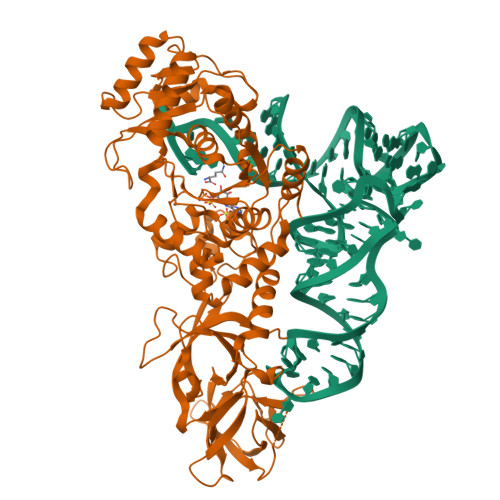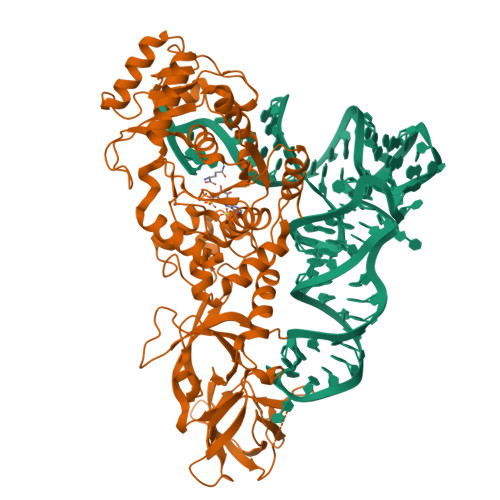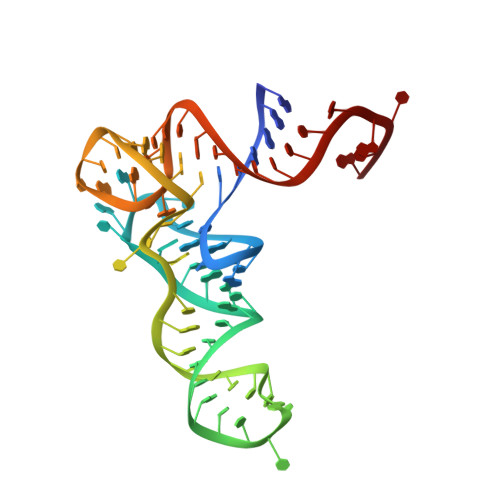tRNA-dependent Aminoacyl-adenylate Hydrolysis by a Nonediting Class I Aminoacyl-tRNA Synthetase.
Gruic-Sovulj, I., Uter, N., Bullock, T., Perona, J.J.(2005) J Biological Chem 280: 23978-23986
- PubMed: 15845536
- DOI: https://doi.org/10.1074/jbc.M414260200
- Primary Citation of Related Structures:
1ZJW - PubMed Abstract:
Glutaminyl-tRNA synthetase generates Gln-tRNA(Gln) 10(7)-fold more efficiently than Glu-tRNA(Gln) and requires tRNA to synthesize the activated aminoacyl adenylate in the first step of the reaction. To examine the role of tRNA in amino acid activation more closely, several assays employing a tRNA analog in which the 2'-OH group at the 3'-terminal A76 nucleotide is replaced with hydrogen (tRNA(2'HGln)) were developed. These experiments revealed a 10(4)-fold reduction in kcat/Km in the presence of the analog, suggesting a direct catalytic role for tRNA in the activation reaction. The catalytic importance of the A76 2'-OH group in aminoacylation mirrors a similar role for this moiety that has recently been demonstrated during peptidyl transfer on the ribosome. Unexpectedly, tracking of Gln-AMP formation utilizing an alpha-32P-labeled ATP substrate in the presence of tRNA(2'HGln) showed that AMP accumulates 5-fold more rapidly than Gln-AMP. A cold-trapping experiment revealed that the nonenzymatic rate of Gln-AMP hydrolysis is too slow to account for the rapid AMP formation; hence, the hydrolysis of Gln-AMP to form glutamine and AMP must be directly catalyzed by the GlnRS x tRNA(2'HGln) complex. This hydrolysis of glutaminyl adenylate represents a novel reaction that is directly analogous to the pre-transfer editing hydrolysis of noncognate aminoacyl adenylates by editing synthetases such as isoleucyl-tRNA synthetase. Because glutaminyl-tRNA synthetase does not possess a spatially separate editing domain, these data demonstrate that a pre-transfer editing-like reaction can occur within the synthetic site of a class I tRNA synthetase.
Organizational Affiliation:
Department of Chemistry and Biochemistry & Interdepartmental Program in Biomolecular Science and Engineering, University of California, Santa Barbara, California 93106-9510, USA.




















